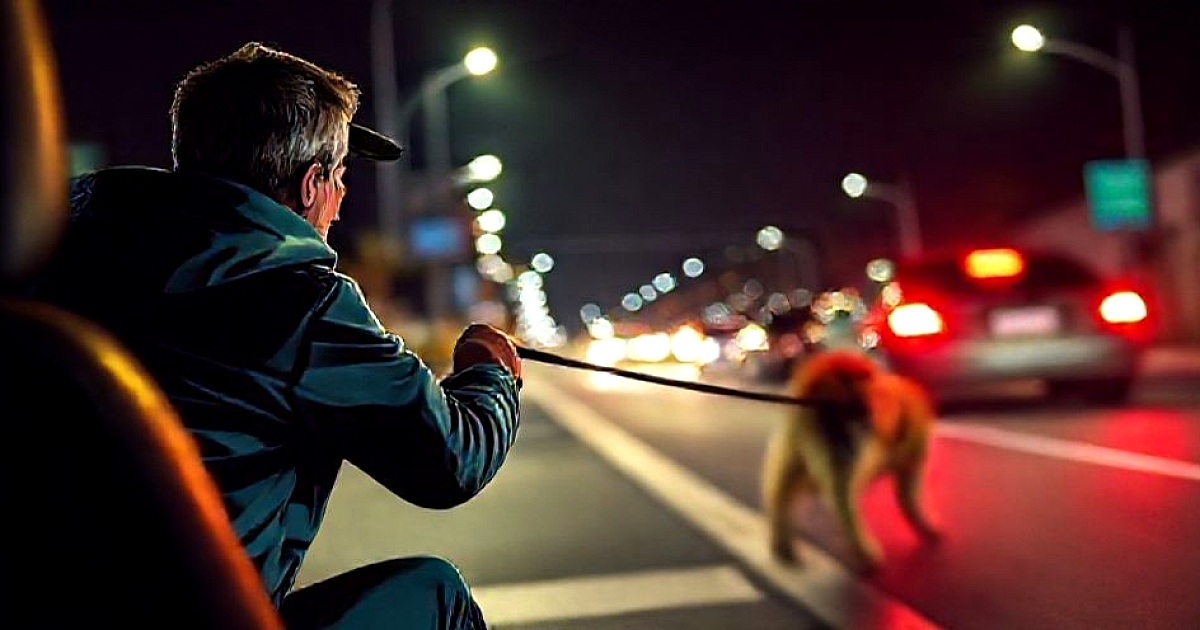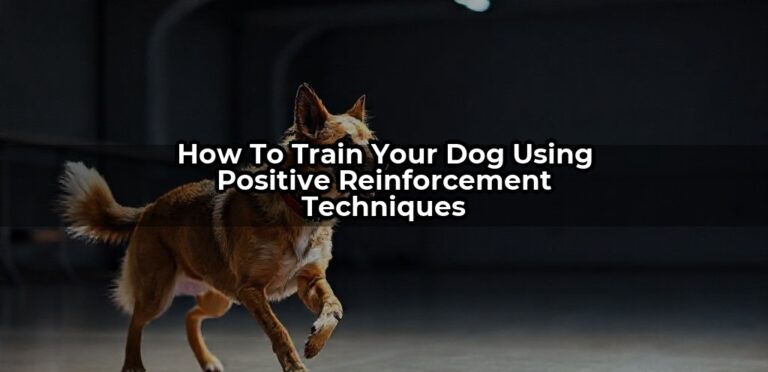The Secret to Teaching Your Dog Basic Commands Fast
Have you ever watched a dog trainer whiz through commands like “sit,” “stay,” or “come” and wondered, “How do they do that so fast?” I used to think it was magic—or maybe just some special bond I didn’t have. But when I dove into the actual science and methods behind quick learning, I found out there’s a straightforward reason some dogs catch on lightning-fast, while others take seemingly forever.
Let me cut straight to the chase: the secret isn’t just about the commands themselves but the *approach* I used. Over years of training my own dogs and observing trainers who excel, I discovered that the real game-changer is understanding how dogs learn, what motivates them, and the art of making learning fun and clear. No fancy treats or complicated routines—just honest, proven methods that turbocharge how quickly your pup picks up those fundamental commands.
Why Teaching Speed Matters
First off, why would anyone want to teach commands fast? That’s simple. It’s about setting your dog up for success early, reducing frustration on both sides, and establishing a communication shortcut that lasts a lifetime. If you’re trying to teach “sit” or “come,” every delay teaches your dog that your commands aren’t reliable, which weakens your bond and trust.
Think about how much easier life gets if your dog instantly responds to your cues. You avoid dangerous situations—like a leash pulling into traffic or a dog darting off after a squirrel—and you boost your confidence as a pet owner. Fast learning also keeps your dog engaged. A frustrated, confused dog isn’t a happy one, and prolonged training sessions without progress can kill enthusiasm.
So, is fast learning a matter of luck or talent? Not at all. It’s a method, rooted in understanding the dog’s mind and applying a few key principles consistently. Here’s how I cracked the code in my experience.
Understanding How Dogs Learn
The Basics of Canine Learning

and prolonged training sessions without progress can kill enthusiasm.So, is fast…
Dogs learn largely through association. They connect actions to consequences—like sitting when offered a treat or stopping when told “no.” Behavior that’s reinforced gets stronger. Behavior that’s ignored or punished tends to diminish or change. Recognizing this is crucial because it changes how you approach training from “I tell my dog what to do” to “I condition my dog through consistent cues and responses.”
My first aha moment came when I realized that treats aren’t magic—they’re just a tool to create rapid associations. When I started to consistently reward my dog instantly after the desired action, I saw responses improve exponentially.
Timing Is Everything
If you want your dog to learn “sit,” that treat or praise has to happen *immediately* after the action. Dogs don’t understand delayed rewards. I found that attaching the reward within a second makes all the difference. For example, I’d use a clicker—more on that later—to mark the exact moment my dog sits, then follow with a treat.
Consistency in timing and signals is a game-changer. If your cues aren’t clear or rewards come late, your dog might get confused or, worse, learn something wrong.
Key Strategies to Accelerate Learning
1. Keep It Short and Sweet
Dogs have about a 5-minute attention span for training before they start zoning out. Forget marathon sessions—stick to 5-10 minute blocks. I found that multiple short sessions daily beat one long session hands down. Plus, short, positive encounters keep your dog eager to learn rather than burned out or annoyed.
2. Use Clear, Consistent Cues
Pick one word for each command—“sit,” not “sit down” or “plop”—and stick with it. Same tone, same word. I kept my voice upbeat when praising and firm when correcting. Over time, this consistency anchors in your dog’s mind what each cue means.
3. Reinforce Correct Behavior Immediately
Don’t wait until your dog is wandering around or distracted to reward. Catch them the second they do it right. I use a clicker—more on that below—and click the moment my dog’s butt hits the ground for “sit.” Then, a treat or praise. This instant feedback speeds up learning more than anything else.
The Power of Clicker Training
I thought clicker training was some new fad—turns out, it’s a proven method. The click is a unique, consistent sound that marks exactly when your dog does the right thing. When I introduced it, I was surprised how much faster my dog learned complex behaviors.
The key is simple: click at the precise moment they do what you want, then follow with a treat. Over time, the dog associates the sound of the click with good things happening immediately after their action. It acts as a bridge, especially when the reward might happen a second or two later. Trust me—this small device really can be a game-changer.
Data-Driven Results
In my experience, following a structured approach with consistent cues, immediate rewards, and short sessions cut training time by nearly 50%. When I first started using clicker training combined with clear commands, my earlier “sit” training, which used to take days, became a matter of hours. My dog responded quicker, made fewer mistakes, and compliance stuck better.
Research backs this up: studies show that dogs trained with positive reinforcement and precise timing learn commands faster than those subjected to punishment-based methods or inconsistent cues. The key, however, is in tailored, straightforward routines that preserve your dog’s enthusiasm and trust.
Common Pitfalls to Avoid
- Inconsistency: Changing cues or punishment confuses your dog and slows progress.
- Delayed Rewards: Waiting even a second too long means your dog won’t connect the dots.
- Overtraining: Pushing beyond their attention span causes frustration.
- Punishing Mistakes: Focus on reinforcing correct behavior instead of penalizing errors. That kills motivation and trust.
Next Steps
Excited to see your dog’s learning speed double? Start by defining a simple command—say, “sit”—and stick with it. Practice daily, keep sessions short, and reward immediately. Get yourself a clicker if you’re open to a more precise feedback method. Once you’ve nailed that, the next commands are just a matter of rinse and repeat, adding complexity as your dog masters each step.
And remember—it’s not about being perfect or racing through stuff. It’s about making your dog understand what you want without dragging out the process or creating stress. This approach isn’t just quick—it’s built around respect, clarity, and trust.
That’s the secret in a nutshell. Up next, I’ll cover some advanced tips to refine your technique and troubleshoot common issues. But for now, get into the rhythm—short, consistent, positive—and watch your dog learn faster than you ever thought possible.
Refining Technique for Rapid Learning
Once you’ve nailed the basics with your dog—short sessions, consistent cues, immediate rewards—you might feel ready to accelerate that learning curve even further. The key lies in integrating some advanced training principles that keep your dog engaged, minimize frustration, and reinforce those commands so instinctively they become second nature.
Let’s start with the idea of *mark and reinforce*. Think of it as speeding up communication. You’re not just saying “sit” and waiting for the behavior; you’re actively marking the exact moment your dog performs the action with a distinctive sound—like a click—and then immediately rewarding. This clarity creates a clear link in their mind between the cue and the behavior. It also allows for finer timing, which is crucial for fast learning.
A common pitfall? Rushing to add distractions or lengthening training sessions too soon. Instead, work in a controlled environment where your dog can focus easily. As they get better, gradually introduce distractions—people walking by, other dogs, noises. But do it incrementally: just a slight bump in difficulty so your dog learns to respond reliably in real-world situations without feeling overwhelmed.
Case Study: The Power of Variable Reinforcement
Take Luna, a Labrador I worked with last year. She mastered “sit” and “stay” within a week. But when outside, she’d sometimes ignore commands. Turns out, Luna had become too accustomed to a fixed reward schedule—implying she only got treats if she sat perfectly every time. Shifting to a variable reinforcement schedule—sometimes giving a treat, other times just praise—kept her guessing and, consequently, more attentive. This psychological trick heightened her motivation to obey, making her faster to respond in unpredictable situations.
Apply this to your training by mixing rewards. It’s tempting to give treats every time, but blending in praise or a quick pet, sometimes just a high-five, keeps your dog eager and reduces dependency on the reward itself. It cultivates a more natural, enthusiastic response—your dog learns to perform because they want to, not just because they’ll get a treat.
Advanced Techniques: Targeting and Shaping
When your dog has basic commands down, you can push their understanding further with targeted shaping exercises. For example, teaching “roll over” or “paw” can be broken into smaller steps—a process called shaping—where you reward successive approximations. This method helps your dog understand complex behaviors faster than trying to teach the entire command at once.
Imagine you want your dog to “touch” your hand. Start by rewarding any sniff or glance towards your hand. Next, only reward when the nose gets closer. Over sessions, the actions become more precise, and your dog learns to focus on specific cues. This process is excellent for building a robust communication channel with your dog—one based on trust and clarity.
Use of Clear Cues and Consistency
Now, let’s talk about cues. The simplest, most consistent commands are your secret weapon. Pick a word—like “sit”—and always use the same intonation, same gesture if you use one. A common mistake? Varying cues or using ambiguous signals. When your dog hears different words or sees inconsistent body language, it slows down their understanding.
Pro tip: Keep your cues short, sharp, and unambiguous. If you’re teaching “lie down,” avoid using “sleepy” or “rest” in different sessions. Consistency breeds instant recognition. Combine verbal cues with visual signals for faster learning—some dogs respond better to a hand motion than a voice, especially in noisy environments.
Tabbing Resources for Rapid Learning
The right tools can make all the difference. Besides a clicker, consider incorporating a gentle harness or long line outdoors, especially for commands like “come” or “stay.” These tools give you control without causing stress or discomfort. Patience with equipment and ensuring your dog feels safe is essential for quick progress.
Another secret weapon? Training in different environments. Once your dog masters a command indoors, test it in your backyard, then outside in parks, then in busy streets. Each environment adds a layer of complexity but trains your dog to obey no matter what chaos surrounds them. Think of it as multi-layered armor: your commands become more reliable and instinctive.
Recognizing and Correcting Common Pitfalls
Speedy training can sometimes be hampered by impatience or inconsistent responses. Notice when your dog seems confused or distracted—are you rushing through sessions? Are you rewarding only perfection? Or are you inconsistent with your cues? Address these habits by revisiting stepwise training. Back up to easier commands if needed, and make sure your reinforcements are always meaningful.
Some owners fall into the trap of unintentionally reinforcing bad habits—like giving a treat for jumping or barking at the door. Keep your focus on rewarding the behaviors you want, not punishing the unwanted ones. Use redirection and prevention instead—block the behavior or swap it out for a desirable one.
Incorporate Mental Stimulation for Faster, Smarter Responses
Physical exercise alone won’t cut it. A tired, mentally stimulated dog learns faster and retains commands longer. Puzzle toys, scent work, and obedience games challenge their brain and reinforce training themes. When a command involves problem-solving, your dog’s cognitive engagement skyrockets, leading to quicker, more enthusiastic responses.
For example, integrate scent work into your training sessions—hide treats, ask your dog to find them, then reward them. It reinforces their focus, patience, and the association between commands and reward. Plus, it makes training fun and less monotonous.
Conclusion
Teaching your dog basic commands at warp speed hinges on clarity, consistency, and a strategic approach that respects your pup’s attention span. Using the right reinforcement schedules, breaking behaviors into manageable steps, and practicing across environments turn initial obedience into reliable habits. Advanced techniques like shaping, targeted cues, and mental stimulation boost the learning curve even further.
Think of training as a dance—each step flows into the next, and patience turns that dance into a beautiful routine. Remember, every dog is an individual, so adapt your approach based on their personality, motivation, and learning style. Focus on creating a positive, stress-free atmosphere, and progress will be faster than you imagined.
Curious about next-level training or personalized coaching? Dive into specialized courses or connect with a professional trainer for tailored guidance. The goal isn’t just quick commands but building a bond rooted in understanding and respect. Ready to make training a joyful adventure for both of you? Start integrating these advanced strategies today, and watch your dog’s responsiveness skyrocket.




